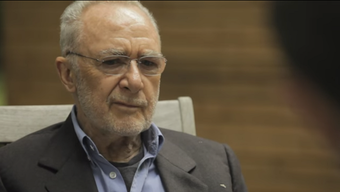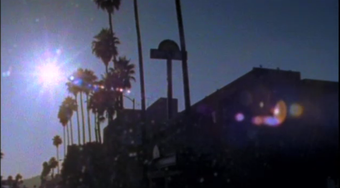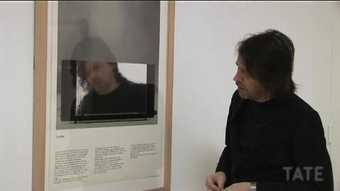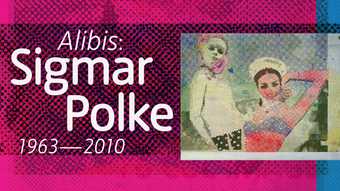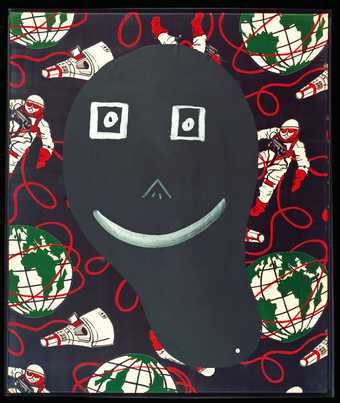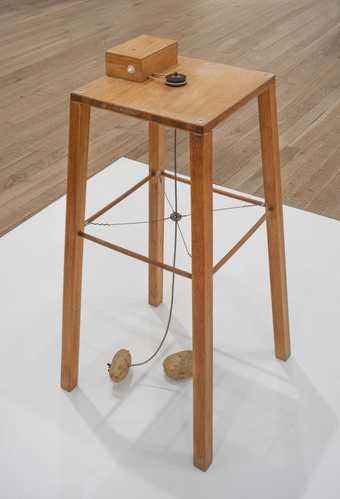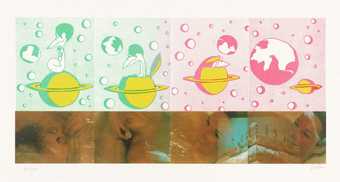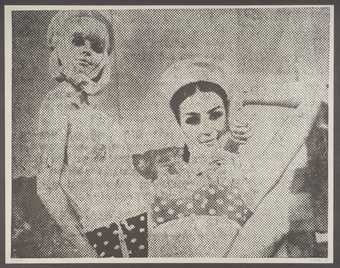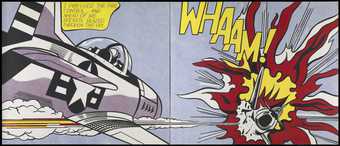I think Polke emerges from this exhibition as one of the most exciting and experimental artists of the last 50 years, constantly putting different mediums together using materials that no other artist had thought of. The paintings behind me were made in Düsseldorf when Polke was a very young man in his early 20s, and they show him responding to the beginnings of consumer society in West Germany. He and a group of other artists called themselves the Capitalist Realists, and they were really picking everyday things to make paintings of, things like socks, shirts, plastic tubs.
In the early 1960s Polke started to look at half tone printed images in magazines and in newspapers. He would photograph these images and then project them as slides onto canvas and meticulously copy up these dots. He would let errors slip into his process. You see lots of blotches and those are just where the paint has spilled or where something has smudged.
The potato house looks like a garden shed that you might find in the allotment of a West German middle class man or woman, but instead of the potatoes being under the earth they're at every joint of the lattice. And I think Polke was interested in the potato, not just as a staple of German food, but also as a magical kind of thing. The potato sprouts all over its surface and this to me speaks of the way that Polke had ideas in all sorts of directions at once in unpredictable ways.
We're now in a large room devoted to Polke's work of the 1970s, and lots of things happen in the '70s. He travels a lot, he begins to live on a farm where he is surrounded by a gang of friends and he makes his works collaboratively. He also explores different kinds of drugs, especially hallucinogenic drugs. And the works behind me feature lots of magic mushrooms. Alice in Wonderland is typical of his 1970s paintings that has lots of overlaid images and he'd explore that in his films as well.
In his first trip to New York he found the city in an economic recession and decided to make images of homeless people, drunks who were living on the bowery. He let the chemicals that are used to develop photographs be as present in the image as the images of the homeless people themselves.
So a massive shift takes place in Polke's practice in 1982. He begins to make larger paintings, and he was really doing a lot of research into pigments, sometimes pigments that had been banned, poisonous pigments with arsenic in them or sometimes treating pigments in a way so that they would look different. And they're very difficult to make sense of, they are hard to see and certainly when you're in front of them it's never quite sure where you should be standing. But that is what I think what they're all about, they're about putting you into a bit of a crisis when you're looking at the works.
Polke had always been interested in different kinds of distortion of images, and in the 1990s he began to explore distortion and corruption by using photocopiers. He would twist the piece of paper that was being photocopied so strange warps would occur. And then created a slide from that which he's used to make a painting and it shows a giant strange black figure towering over a crowd of hands. He used things like bubble wrap and meteor dust, snail juice, arsenic based green paints and so on and so on. But also film, photography, drawing, potatoes, measuring sticks, bamboo canes. He's also a very humorous artist but at the same time an artist who confronts different historical memories, the memory of the Nazi period, the Berlin Wall, the crises of the world that he lived through.


